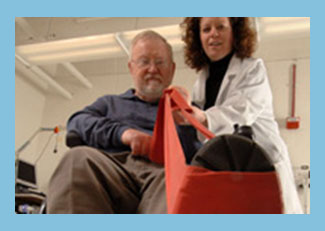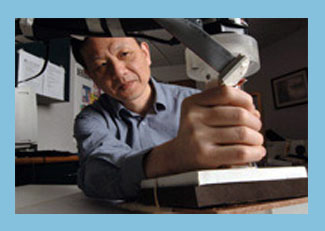DVD-Guided Mental Practice for Stroke Rehab
Student:
Investigators: Ken Fischer, PhD; Wen Liu, PhD; Patricia Kluding, PT,
PhD;
Stroke is a disorder that affects over 700,000 of people each year, and nearly 500,000 will be left with some sort of long-term disability. While the underlying cause is neurological disability in the region of the brain where the stroke occurred, the functional problem is most often physical disability. Lower extremity deficit causes problems with walking and balance, while upper extremity deficit represents significant challenges with common activities of daily living (1,2). This research aims for rehabilitation and restoration of function for those stroke victims that have residual physical impairment. Specifically, the objectives of this research are to 1) increase the rate of recovery and 2) increase the level of recovery for stroke patients with physical impairment of upper extremity movement, including both strength and control.
Conventional neuro-rehabilitation following stroke consists of therapeutic exercise and occupational therapy. Typical protocols are fairly intense with as much as three hours of therapy a day, five days a week. Insurance coverage may limit duration of sessions and the number of covered sessions, creating a financial disincentive to further rehabilitation therapy. Thus, it is imperative to maximize functional improvement in the time available to patients for rehabilitation.
Mental practice of rehabilitation exercises to improve outcomes was proposed nearly 20 years ago, but it still has not become a standard of care (4,5). The approach is based on the practice of mental visualization and rehearsal used by athletes, which has been shown to improve strength, speed, and control of movement (4,6,7). There is even evidence that mental rehearsal activates the neurological system, sending very low level impulses (too small to cause muscle contraction) to the muscles. Studies have now shown that mental practice improved rehabilitation outcomes over standard therapy alone (8,9). The main problem now is getting mental practice into common use with therapists and assuring that it is practiced properly by stroke patients. Therapists may not be familiar with visualization techniques, and patients will have varying levels of visualization skills.
We will address all these issues with a DVD-guided visualization system that we expect will enhance post-stroke rehabilitation outcomes. The DVD will provide instruction on the best environment and proper technique for visualization, and will provide example video clips of the ideal motion for specific tasks. In this approach, the visualization is not entirely mental, but the patient watches the video and rehearses the activity in his/her mind along with the video. This helps focus the mental practice on a ideal motion. Each mental practice therapy session can be set as a track on the DVD, so the patient is more likely to focus well and mentally practice for the desired amount of time. Even a stroke patient with very little or no function, can perform mental practice visualization exercises. And even a therapist with no visualization training can describe the overall purpose of the mental training and distribute the training/practice DVD.
For the study we are evaluating a control group (no mental practice), a regular mental practice group, and the DVD-guided mental practice group. They will be evaluated at baseline and two additional time points for upper extremity function. Evaluations will be made using standard manipulation tasks in the streamlined Wolf Motor Function test and using the InMotion2 shoulder and elbow robot.

Dr. Kluding assists a patient.

Dr. Liu works with the InMotion2 shoulder and elbow robot.
